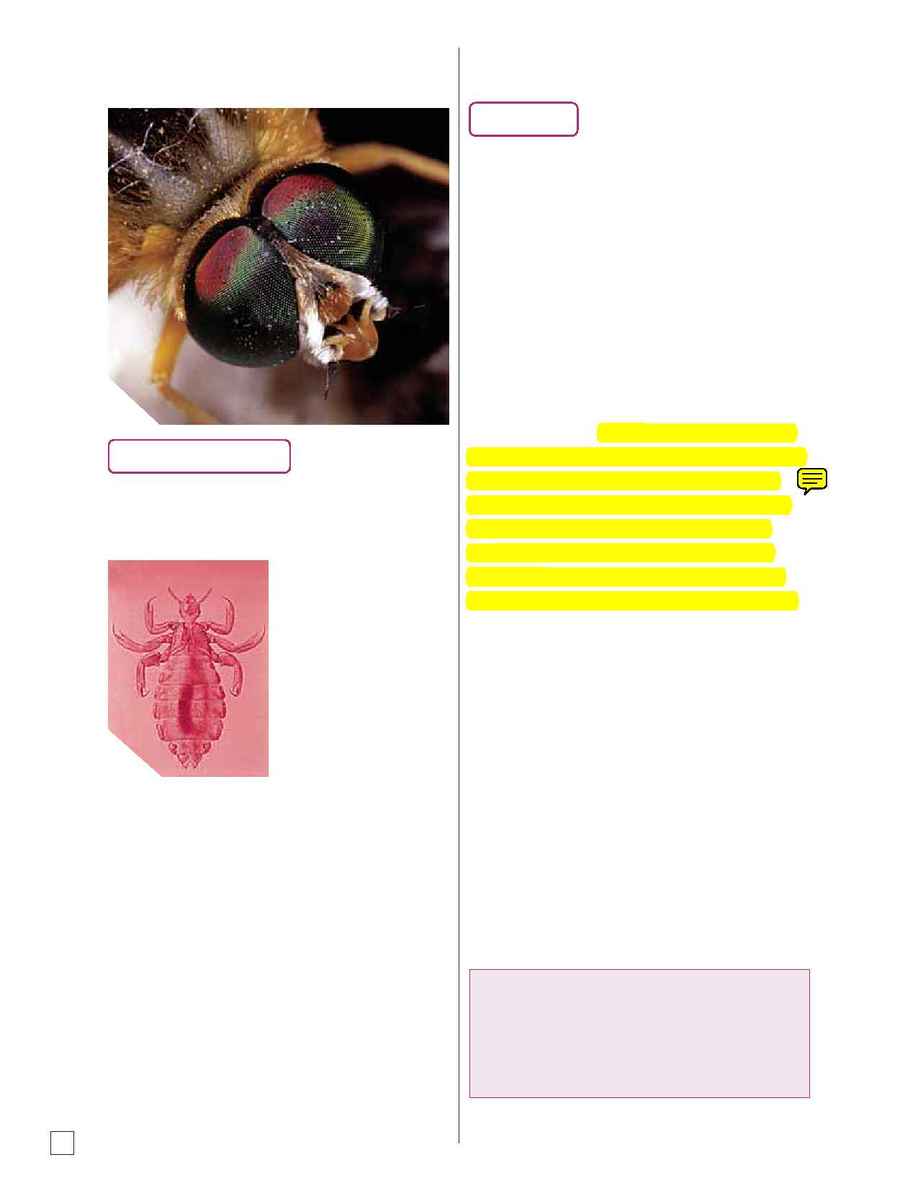
Salon Fundamentals
TM
Esthetics
s k i n c a r e c e n t e r e c o l o g y
104
External Parasites
External parasites (PEAR-uh-sights) are organisms
that grow and feed on other living organisms,
which are referred to
as hosts. They
contribute nothing to
their host and cause
contagious diseases.
Two such parasitic
animals are head lice
(pediculosis capitis) and
itch mites (scabies).
Clients that have a
disease caused by a
parasitic animal should not be treated and
should be referred to a physician. Parasitic
plants, or fungi, are molds and yeast that produce
such contagious diseases as ringworm (tinea
capitis), honeycomb ringworm (favus) and nail
fungus. These can occur on natural nails or with
clients wearing artificial nails, and can spread via
improperly disinfected implements. An esthetician
can spread infection to a noninfected area by
using the same implements previously used in
an infected area. Be aware of this fact when
performing hand or foot treatments.
Infection
An infection occurs when disease-causing
(pathogenic) bacteria or viruses enter the body
and multiply to the point of interfering with the
body's normal state. An infection is the growth
of a parasitic organism within the body. These
microorganisms are referred to as pathogens, and
include viruses, bacteria, protozoa and fungi.
An object that contains pathogens is considered
contaminated. To prevent cross-contamination,
all pathogens need to be removed from the object
(decontaminated). Bloodborne pathogens such
as HBV and HIV are transmitted through blood
or body fluids and cause infectious diseases.
Airborne pathogens can travel through the air
and can be transmitted from one person to
another through casual contact. Contagious
infections or communicable diseases such as
tuberculosis are caused by airborne pathogens.
Common means of spreading infection in a
skin care center include:
·
Contact with open sores
·
Contact with contaminated hands and
implements (usually due to improper
disinfection between clients)
·
Exposure to coughing or sneezing
·
Use of common drinking cups and towels
·
Exposure to unsanitary conditions
·
Use of facial beds that are not properly
disinfected between clients
Malaria is the world's oldest and deadliest virus.
In their early writings, Egyptians and Greeks
reported having malaria symptoms. Malaria was
originally known as Roman fever and stems from
the Italian words,
mal and aria, meaning bad air.
Pediculosis capitis
